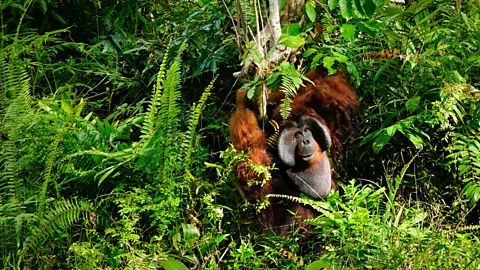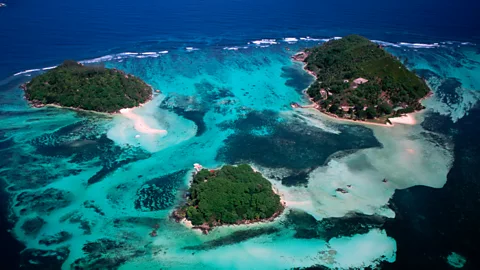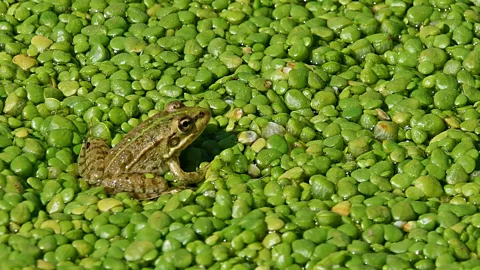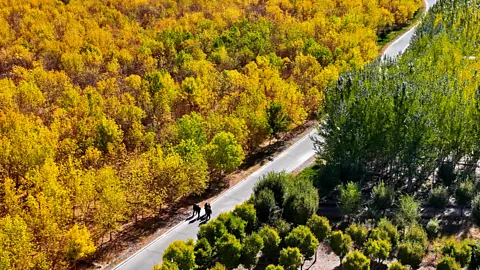 Getty Photographs
Getty PhotographsWorld leaders are gathering in Cali, Colombia, to agree methods to save lots of species from extinction and restore nature. Listed below are 5 highly effective options to halt biodiversity loss.
There is a treasure trove of the way to save lots of species in decline, and restore their habitats to allow them to reside safely. In a wholesome state, wealthy and biodiverse habitats can replenish our water, air, soil and cut back the danger of harmful contagious illnesses.
The necessity for conservation initiatives like these is rising in urgency. Two years in the past, leaders of greater than 100 nations signed as much as essentially the most bold worldwide effort to save lots of the world’s nature: to guard 30% of the world’s land and oceans by 2030. In October 2024, world leaders have once more gathered to take inventory of the worldwide progress to guard biodiversity, in Cali, Colombia.
Up to now, the world is a good distance off observe: simply 17% of land and eight% of our oceans are below some type of designated safety, in keeping with The Nature Conservancy – although the realm the place safety is enforced successfully is probably going much less.
Future Planet brings you 5 confirmed methods it is attainable to revive biodiversity and protect nature.
1. Defend our oceans
Marine Protected Areas (MPAs), if correctly enforced, can develop into essential biodiversity havens, which shield numerous species from overfishing, air pollution and habitat destruction. International locations which have established MPAs have skilled nice biodiversity wins.
How large is the problem?
Three-quarters of the world’s ice-free land has already been altered, in keeping with a worldwide evaluation in 2019 by the Intergovernmental Science-Coverage Platform on Biodiversity and Ecosystem Companies (IPBES).
Within the oceans, 66% are in decline resulting from rising stress from human exercise, the report discovered.
The Seychelles, an archipelago of 115 islands within the Indian Ocean, for instance, skilled a main whale comeback after signing as much as a debt for nature swap, which led to nearly £16.8m ($22m) of its nationwide debt being written off in trade for creating 13 MPAs. Scientists described the return of blue whales to the Indian Ocean as a “conservation win” after the inhabitants was decimated by the Soviet whaling fleet within the Sixties.
The Azores Islands created the most important MPA within the North Atlantic in October 2024, spanning 287,000 sq km (110, 811 sq miles) and defending 30% of the ocean surrounding the Portuguese archipelago. Portugal’s first MPA was designed by native fishers who have been keen to guard octopus and sardine populations within the Algarve. Spanning 156 sq km (60.2 sq miles) of sea, with a 20 sq km (12.4 sq miles) no-fishing zone, the realm has given nature an opportunity to replenish and guarantee important meals sources can be found lengthy into the long run.
“For hundreds of years, Azoreans have been tied to the ocean, and we wish to make sure that this connection stays sturdy by supporting communities that rely on a wholesome ocean,” says Luis Bernardo Brito e Abreu, a authorities advisor within the Azores. “Our hope is that our motion is not going to solely profit our folks and wildlife within the Azores, however encourage the remainder of the world to succeed in their international commitments to guard 30% of the ocean.”
 Getty Photographs
Getty Photographs2. Struggle invasive species
Olympic rowers and windsurfers have additionally began elevating consciousness of the environmental menace invasives pose, by eradicating harmful fauna and flora from their boats and hydrofoils. In the meantime, cooks within the US and UK are serving up squirrel, Japanese knotweed and crayfish. Cooking with prolific pests is unlikely to eradicate them, however can educate the general public concerning the risks of invasives, the cooks say.
However, in some cases, complete eradication is feasible. The tropical island of Palmyra within the Central Pacific Ocean managed to eliminate all 20,000 rats that dominated the atoll (a inhabitants density 10 occasions increased than in cooler climates) in 2011. Nature rebounded after the eradication, native bushes gained floor and two new crab species have been noticed on the islands for the primary time. (Learn extra concerning the rats evicted from paradise in this story by Sophie Hardach).
 Getty Photographs
Getty Photographs3. Restore degraded wetlands
Some wetlands will also be highly effective carbon sinks when they’re in a wholesome state, making their restoration much more urgent within the race to curb local weather change. A Finnish fishing neighborhood turned the carbon-rich peatlands of Linnunsuo from a polluted, barren land used for peat extraction to a house for water birds. Only one 12 months after restoration in 2013, greater than 100 species had returned to Linnunsuo. One other 100 species have joined them since.
Habitat restoration can occur in any degraded space, not simply former industrial land. Your again backyard may be a super spot for a miniature wildlife haven for aquatic and semi-aquatic species.
 Getty Photographs
Getty Photographs4. Save keystone species
All crops and animals reside as a part of a fastidiously balanced ecosystem, and when one aspect of that system is eliminated the stability is misplaced. However there are some animals that punch properly above their weight in terms of sustaining a wholesome ecosystem. These are referred to as keystone species, and their safety may be central to saving a complete host of different species that depend on their presence.
Ecosystem engineers are sometimes thought of keystone species. Within the US, reintroduced beavers are busy rebuilding misplaced habitats for otters, turtles and fish. Within the Galápagos Islands, in the meantime, big tortoises – as soon as misplaced to the island of Española – “bulldoze” a panorama overgrown with woody crops, creating clearings used as runways and nesting grounds by the critically endangered waved albatross. As with the wetlands, water buffalo are remodeling environments the world over, creating wholesome habitats for all method of species, from frogs and bats to bathroom grasses. And within the Congo Basin, African forest elephants are spreading seeds and vitamins, and serving to bushes to develop taller and reside longer.
 Getty Photographs
Getty Photographs5. Carry forests again to life
When forests are correctly protected, biodiversity thrives. Within the Ecuadorean cloud forest of Los Cedros, monkeys squeal and a few 400 fowl species squawk. However this wasn’t at all times the case. The wildlife of Los Cedros was severely threatened by mining actions and deforestation. In 2021, a choose dominated that clearing the forest for mining violated Los Cedros’ constitutional rights of nature – a rising authorized motion that recognises the inherent proper of the pure world to the identical protections as folks and companies. The forest was granted authorized personhood and reworked right into a sanctuary for biodiversity.
For extra science, know-how, atmosphere and well being tales from the BBC, comply with us on Fb and X.






